So today (Saturday) I would be heading southwest of La Paz to Tiwanaku. There is very little left of Tiwanaku and very little is known about the Tiwanaku civilization who built the ceremonial grounds over a thousand years ago. It is believed that the Tiwanaku people rose to prominence around 600 BC with construction on Tiwanaku beginning aound 700 AD and continuing for 500 years. Only about 30% of the site has been excavated and unfortunately the locals took many of the massive stones to build homes (and the local church) until the government stepped in in the 1950s to preserve the site.
My guide, Milton, and my driver, Oscar, arrived at 8:00 a.m. to begin the 2 hour drive to Tiwanaku. Now while the site is not that far away in miles (75 Km or about 50 plus miles), we had to cross El Alto, which is a traffic sh*t show. Stalls set up on the side of the road so that people lines snake into the traffic. Mini- buses stopping in the middle of the road to pick up people. Trucks meandering up hills. Dogs weaving in and out of traffic. And road closures without explanation. No wonder it took 2 hours.
Unfortunately, I quickly learned that my guide Milton LOVED to talk. Now don’t get me wrong, he was a really nice guy and was a wealth of information. But he NEVER.SHUT.UP. I had to continue to feign interest in the most minute of details (including his slightly weird pre-occupation with cholitas – I later found out his mother is a cholita).

Once we made it through El Alto, we made a quick stop where Milton insisted I try the local bread. The bread was incredibly delicious, but I actually did not have much appetite (still full from the night before). Anyway, we pushed on and finally reach Tiwanaku around 10:30. And wouldn’t you know it. The wind was howling making it incredibly cold. We were going to spend about two hours at the site and at this point, I was thankful I had my hat and heavy duty coat and liner.
The first part of the tour was spent in two museums. The first was the older museum and was filled with early hunting weaponry, pottery, jewelry, produce discovered in burial grounds and of course, the every present mummies. While I was very interested in the pottery, Milton wanted to spend more time looking at the various produce discovered and telling me about the production. I finally told him that I was more interested in the pottery, the designs and colours on the pottery and what the vessels were used for so after that I got my pottery fix.
One of the weird things we learned about the Tiwanaku people is that they practiced cranium reconstruction. As children grew, Tiwanaku people would put wooden blocks on the front and back of the child’s head in order to have the skull grow in an elongated fashion. All of the skulls we saw in the museum had this unbelievable man made deformity.
After the tour through the freeeeeezing museum, we walked down a path to the second museum. This was far more modern and as you entered the building you were met by a gigantic (7.3m) monolith Bennett Pachamama, which had been taken from Tiwanaku and stored in La Paz. The monolith was returned to Tiwanaku in 2002. After taking a turn around the monolith (no pictures please) we went into another room that featured various sculptures, including Cabesa Gigantic (a HUGE head). I can only imagine what the whole statute looked like.

We then left freeeeezing museum no. 2 and began a walking tour of Tiwanaku. First up was Piramide de Akapana. The site was massive and apparently a tribute to the sun. (It is believed that the Tiwanaku people worshipped the sun, the earth and the underground.). While the remains of the temple were pretty spartan, you got an idea of how massive the site was in its heyday.
Unfortunately, a lot of the hiking around the site was uphill so I was in my usual state of gasping for air at every turn. Once we climbed the hill, we went down a little incline past Kantatallita, which really just consisted of a pile of rocks.
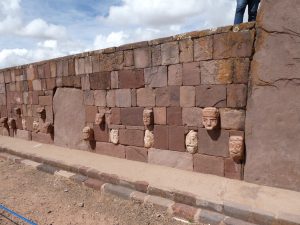
However, the next site was incredibly fascinating. That was the side dedicated to the underground: Templet Semisubterraneo. Not only was the temple in really good condition, but numerous stone heads believed to be former rulers, lined the walls are were in surprisingly good condition. In the center of the temple were three stone monoliths. We wandered around and looked at the various stone heads, including three made out of entirely different materials and looking shockingly like aliens (which Milton pointed out).

From the underground temple, we walked along the wall of the ground level temple and checked out Putuni (a burial ground) and Kerikala before returning to Templo de Kalasasaya. Unfortunately it was up, up, up another set of massive stairs where we took in the the temple dedicated to the earth. This site was pretty well preserved with a series of arches and monoliths. It is said that on the equinox, the sun shines directly through the arch. Tiwanaku people like other ancient cultures were fascinated by the sun, the moon and the stars and studied them endlessly.
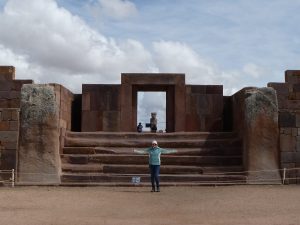
The star of the show was Templo de Kalasasaya with two incredible artifacts. The first was monolith Ponce, a well preserved statue that included a turban and the monolith holding a stick and a vase. The second was the beautiful Puerta del Sol (Gateway to the Sun). The arch featured a well preserved carving of the sun.


After taking the requisite pictures, we hiked down the stairs (yay for down stairs) and headed into the little town where we took in the old church (constructed in part with Tiwanaku stones) and the lovely square, which had been decorated with recently carved statutes featuring Tiwanaku history. By now it was 12:30 and we took a short break for some lunch. Quinoa soup (not as good at Josefina’s), fried trout, chicken, beef, salads and the requisite rice and potatoes. I was still not hungry, but scarfed down the soup and had some trout and salad and called it good.
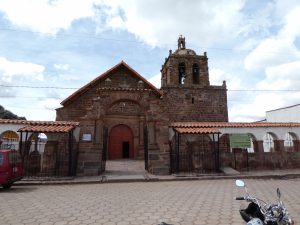
We were back in the car and headed to El Alto where we would take the yellow tram and connect to the green tram to meet our driver who would take us to Moon Valley. (We could have gone with the driver, but Milton insisted on taking the trams for the experience, which I heartily agreed.)
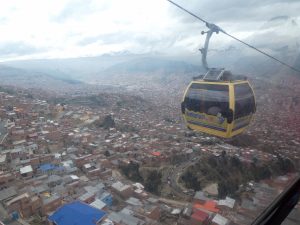

So once back in El Alto, it was up, up and away and over the top of La Paz to meet Oscar. Once at our stop we hopped in the car and drove a quick 15 minutes to the site. Now Milton told me that Moon Valley was allegedly named by astronaut Neil Armstrong who was playing a round of golf nearby and hit a shot into the strange sand and clay sculptures. Armstrong said it looked like Moon Valley and the name stuck. Pretty sure I don’t believe the story, but what the heck. Anyway, today, the area has been designated a protected park.
Once at the site, we walked in and began our hike around, up and own little paths. It was really pretty cool and did indeed look like the moon. Instead of a valley, it was actually a series of peaks and canyons that have been carved by wind and rain over centuries. Unfortunately, urban growth is creeping in and you can actually see houses on the hillside.


After the 20 minutes, I was pretty much done so it was back to the hotel. The day had been incredibly long so it was a great relief when I collapsed on my bed at just before 6. I rested for about an hour before heading across the street to a British Pub for some fish and chips and water. (Just seemed like the right thing to do.). Anyway, I saw a sign in the pub and cursed myself for not bringing my camera:
“Money can buy happiness, but it can buy beer and that is pretty much the same thing.” I laughed and immediately thought of my friends Bull and Stick, who enjoy a pint or two. That sign is for you guys!
I am now off to Uyuni and the Bolivian Salt Flats. I will have no access to internet from Monday to Wednesday so see ya when I get back to the electronic world.
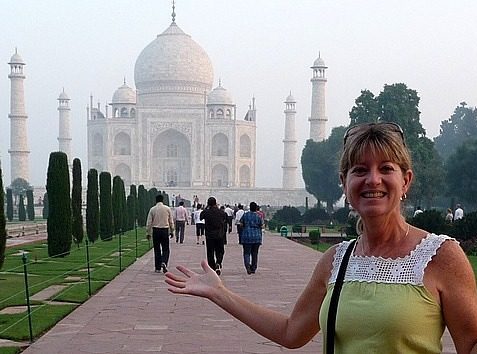
Wow you are sure doing a lot of walking! Here you are cold and we are in a heat spell again!
Love the trams,